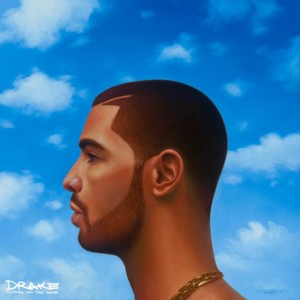Drake and Stromae: In a time of international unity, how similar are we?
The Olympics are often seen as a time of international unity, when countries can set aside their differences in order to celebrate humanity’s greatest athletic achievements. Unfortunately, the Olympics just as often evoke both blatant and subtle forms of political posturing that highlight cultural differences rather than commonalities. In the buildup to and commencement of this year’s Winter Olympics in Sochi, everything from terrorist threats to internet memes featuring Russia’s unpreparedness have distracted from the games’ intended message. But perhaps the spirit of the Olympics is too platitudinous to be realistic, or even relevant.
One need only look to two singer/rapper superstars from different sides of the pond to realize just how different “similar” countries and cultures are, even in our globalized age.
Similarities between Drake, 27, and Stromae, 28, begin in their childhoods. Both had white mothers and black fathers who were relatively absent. Both grew up just across the border from the countries in which they are most popular. Stromae, or Paul van Haver, is from French-speaking Belgium and Drake hails from Toronto, although his father lived in Memphis.
In the last five years, both have developed into dynamic artists who are challenging the conventions of popular music, with their unique integration of rapping and singing. They also bring an unprecedented level of introspection and sophistication to the top of the charts. And, interestingly, their most recent album covers are eerily alike.
Despite their similar demographics, their musical differences come out in the different cultural norms and realities of their countries of origin. Stromae’s music contains significant African influences, which is likely because the black community in Western Europe is largely composed of recent immigrants. Drake, on the other hand, is a product of America’s proud hip-hop and R&B legacies. Stromae employs elements of house, which Drake almost religiously shies away from, which could be attributable to the genre’s prominence in Europe.
The differences are driven further through their aesthetics. Although handsome, Stromae is very skinny, and almost waifish. He often wears bow ties, and other clothes that might be described as “nerdy” in the US.
Drake, on the other hand, is the definition of a male sex symbol. Everything from his lyrics to his portrayal in media and his highly publicized romantic exploits corroborate his sexualized persona. Drake reeks of a uniquely American vision of “cool,” as evidenced by his Instagram which features photos of himself in exclusive clubs with his elite clique of friends, like Johnny Manziel and Nicki Minaj. Stromae’s Instagram is quirky rather than cool — a recent post shows his legs from the knee down in green tights and felt shoes.
Green tights aren’t cool or edgy in America, and as it happens, neither is socially conscious pop music. Stromae’s most critically acclaimed song, “Papaoutai,” is a more redemptive exploration of a real socio-cultural issue than anything Drake has ever released. Drake is unique among American rappers for his sensitivity, but only within his own life, not the larger issues of our world.
In this era of hyper-globalization, we are often reminded of how different we are in more subtle ways. Stromae and Drake remind us that the US and Western Europe are still fundamentally unique cultural universes.
And even in spite of international rhetoric during the Olympics, our cultural output suggests that we are still deeply proud of our differences.
Ben Schneider is a freshman majoring in international relations and English. His blog, “The Way We Live Now,” runs Tuesdays.




I really enjoyed this article on Stromae and Drake, mostly because I really like seeing Americans take a liking to Stromae and his music. I think his lyrics are so beautiful and that he sings about the things we really should be talking about. Hopefully, Stromae will get some more exposure over here and plan a US tour!